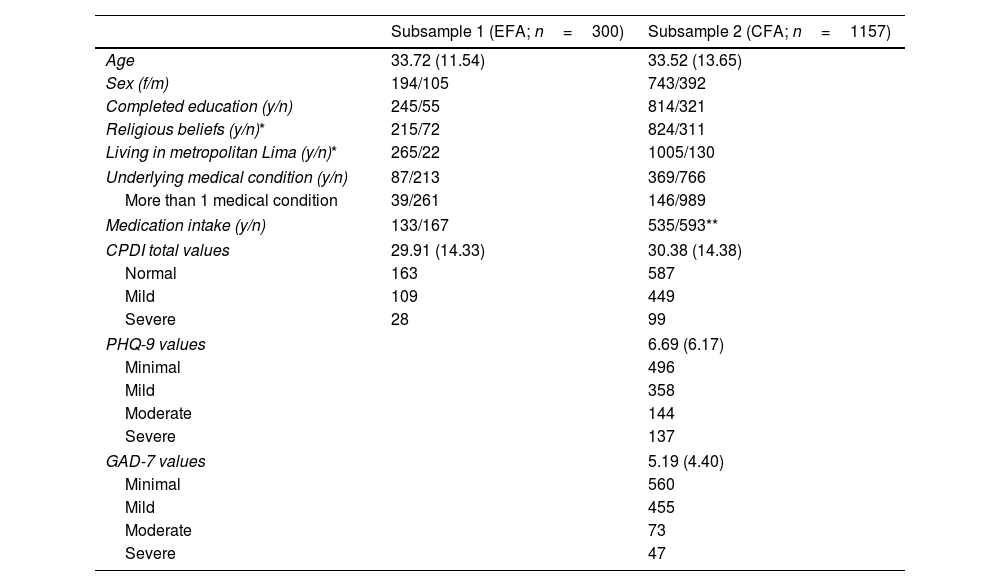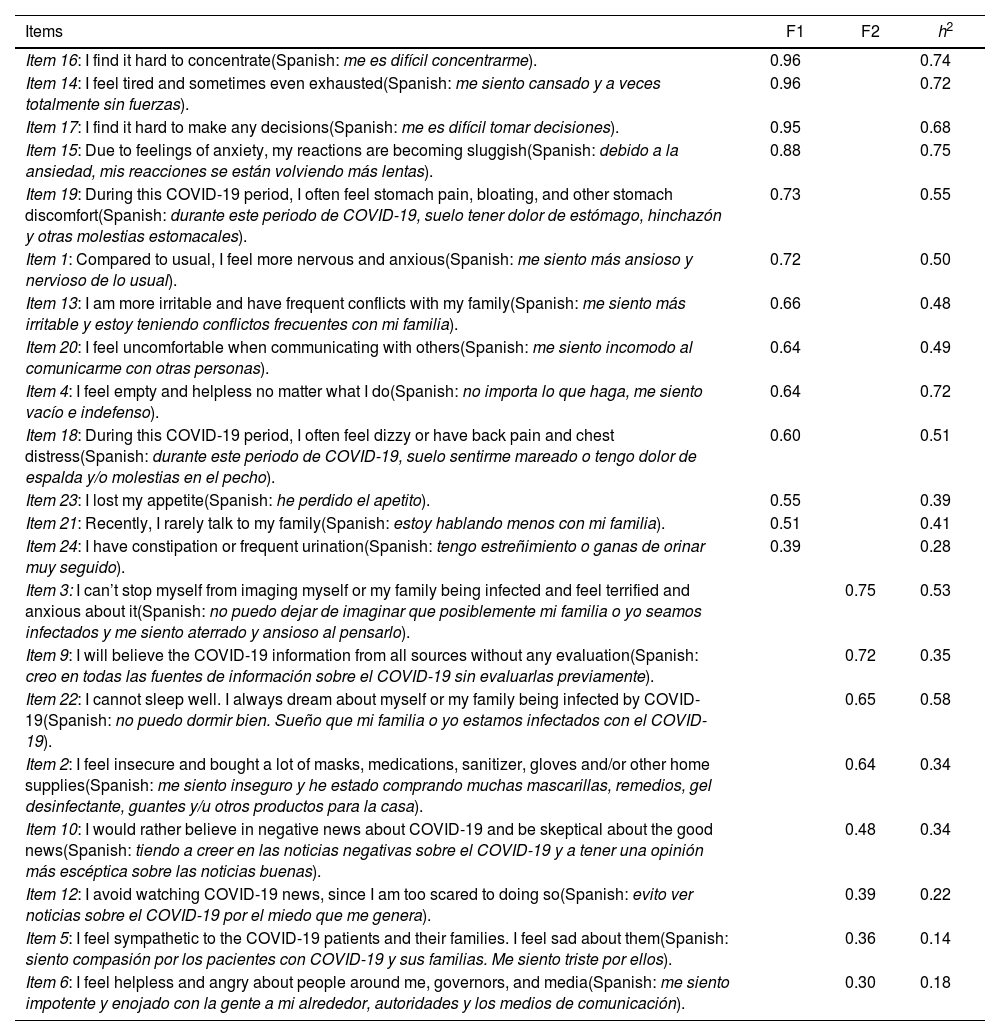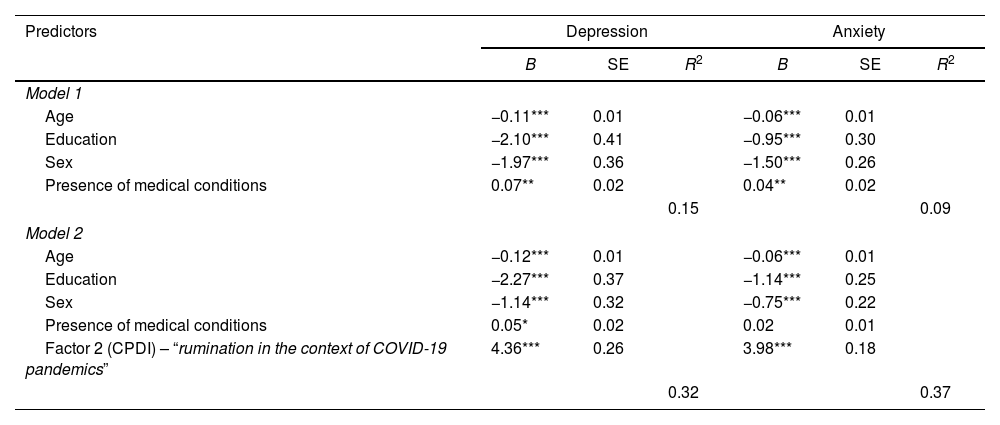The main aims of this study were to adapt the COVID-19 peritraumatic distress index (CPDI) to the Peruvian population and to establish a model explaining depression using CPDI values and anxiety symptoms during the COVID-19 lockdown. Finally, we sought predictive values of the obtained CPDI factors for depression and anxiety as a secondary aim.
Materials and methodsAn exploratory factor analysis (n=300) was performed, followed by confirmatory factor analysis in a second phase (n=1135). To explain depression scores during the COVID-19 lockdown, we performed structural equation modeling (SEM). Finally, we performed a hierarchical regression model (HRM) to evaluate the amount of explained variance of the CPDI factors above depression, anxiety, and socio-demographic variables.
ResultsA 2-factor solution (rumination and stress) for the CPDI (p<0.001; CFI=0.99) was found. Concerning the SEM, our model was able to explain 81% of the depression scores (p<0.001; CFI=0.98). Finally, in the HRM, rumination could explain 17% additional variance in depression (p<0.001) and 28% in anxiety (p<0.001). However, stress showed collinearity with depression and anxiety, not continuing for further HRM analysis.
ConclusionsOur results showed a 2-factor solution for the CPDI. Moreover, our SEM model showed that female sex, younger age, and incomplete education (with high COVID-related stress and anxiety) lead to more depression symptoms during the COVID-19 lockdown. Finally, our HRM showed that people who frequently ruminate during the COVID-19 lockdown are more afraid and negatively affected.
Los objetivos principales de este estudio fueron adaptar el COVID-19 Peritraumatic Distress Index (CPDI) a la población peruana y establecer un modelo que explique la depresión utilizando valores de CPDI y síntomas de ansiedad durante el confinamiento por COVID-19. Finalmente, buscamos valores predictivos de los factores CPDI obtenidos para la depresión y la ansiedad como objetivo secundario.
Materiales y métodosSe realizó un análisis factorial exploratorio (n=300), seguido de uno confirmatorio en una segunda fase (n=1.135). Para explicar los puntajes de depresión durante el confinamiento por COVID-19, realizamos modelos de ecuaciones estructurales (SEM). Finalmente, realizamos modelos de regresión jerárquica (HRM) para evaluar la varianza explicada de los factores CPDI considerando depresión, ansiedad y variables sociodemográficas.
ResultadosSe encontró una solución de 2 factores (rumiación y estrés) para el CPDI (p<0,001; CFI=0,99). En cuanto al SEM, nuestro modelo fue capaz de explicar el 81% de las puntuaciones de depresión (p<0,001; CFI=0,98). Finalmente, en el HRM, la rumiación podría explicar un 17% de varianza adicional en depresión (p<0,001) y un 28% en ansiedad (p<0,001). Sin embargo, el factor estrés mostró colinealidad con la depresión y la ansiedad, y no continuó para un análisis adicional de HRM.
ConclusionesNuestros resultados mostraron una solución de 2 factores para el CPDI. Además, nuestro modelo SEM mostró que el sexo femenino, la edad más joven y la educación incompleta (con un alto nivel de estrés y ansiedad relacionados con COVID) conducen a más síntomas de depresión durante el bloqueo de COVID-19. Finalmente, nuestro HRM mostró que las personas que rumian con frecuencia durante el confinamiento por COVID-19 tienen más miedo y se ven afectadas negativamente.











